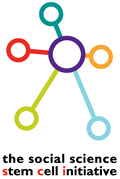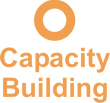BULLETIN SIX - SUMMER 2009
![]()
This is the final e-Bulletin to appear on the SCI site, marking the completion of the ESRC stem cell initiative. Much has happened since we began in 2005 relating in particular to our two main objectives of building capacity in the UK social science community and raising awareness of our work both within and beyond social science itself. Almost 50 researchers including new doctoral students have been funded by the Initiative, a similar number of publications appearing, and new grants for further work secured by members of the SCI network. Strong links with the bioscience and clinical community have also emerged sharing a similar concern with the question of translational medicine and also with the social and policy challenges thrown up by governance of research and commercial products within the field. The field itself has become more heterogeneous as scientific developments such as induced pluripotent cells (iPS) and the approval of first-in-human clinical trials change the baseline from which products, intellectual property and therapeutic advance are being built.
These and related issues figured prominently in the final ESRC Stem Cell conference on May 7-8, which provided an excellent opportunity to explore some – though not all! – of the research we have supported and to link up with others working in the regenerative medicine field in Europe and elsewhere. The meeting, as can be seen from the programme (here), provided an opportunity to report on the results of this research, and uses the Pattison Report of 2005, which set down a number of key recommendations for the UK government, as a context in which these results could be explored. At the same time, the Conference provided an opportunity to explore more EU-wide and indeed global issues by the participation of social science researchers from the UK and beyond involved in the European Commission-funded REMEDiE project which began in May 2008.
Dr John Connolly’s opening keynote provided a strong and informed commentary on the ways in which the Pattison recommendations had, or had not, been implemented or achieved over the past few years. There were many areas where progress had been made – such as such developing new trans-organisational agencies to foster more translational research, as in the Stem Cells for Safer Medicine initiative. But new challenges unforeseen by Pattison have been thrown up. For example, is evident that the business model has become more complex (and indeed more uncertain) as the field becomes more heterogeneous; moreover, the prospective take-up of new products will depend on firms addressing more effectively matters of clinical utility and relevance against existing therapies or products.
It may be – though this is open to debate – that one business model will be akin to that of the private IVF clinics operating in the UK, where stem cell therapies are provided using autologous or allogeneic lines. Currently, the NHS meets the costs of a first treatment. There are though questions about follow-on and monitoring adverse effects and patient safety which presumably would have to be undertaken by both service supplier and clinician. At the same time, since Pattison, the arrival of iPS has encouraged a fairly rapid move into the area by big Pharma, which would open up the field to much greater investment in drug testing and disease targets. As was reported in an earlier SCI e-Bulletin, whatever the size of firm or business model being adopted, a key issue will be having a technology platform that can enable the scale-up of stem cell research: the SCI conference picked this up and a clear message emerged that a crucial socio-technical need was for the development of expensive but small GMP facilities to develop optimal protocols and procedures which meet regulatory approval for others then to scale up. One recommendation emerging in the meeting was for such a role to be played by a public body such as the UK Stem Cell Bank that already undertakes optimal characterisation of lines and small tissue stocks as starter material for scale-up by others.
There was considerable debate however about how far the industry was in long-term trouble, not simply as a result of the credit crunch, but also through a failure to engage properly with clinical practice and need. Complicating the picture is the role of the National Institute for Health and Clinical Excellence NICE in this and producing an evidence-base for cost-benefit that will meet the specific criteria it has. At the same time NICE has failed to depoliticise its judgements in recent years (despite seeking to do so) so how it would respond to the pressure it would be on to meet the clamour for additional first-in-human trials and subsequent therapy is a moot point.
A further theme central to the meeting was the question of governance and regulation, and how, while there has been some progress (such as the development of GTAC and the DH Route Map – available online at http://www.advisorybodies.doh.gov.uk/genetics/gtac/ ) regulatory uncertainty still prevails not least because of uncertainty in the science base and in regard to ethical positions: witness the debate over what counts as a ‘tissue bank’ and the so-called ‘grandfathering’ of consent in regards to the pre-2001 US stem cell lines now being used for purposes other than originally envisaged or consented. The day two keynote speaker, Professor Roger Pedersen, spoke about this in his review of current US policy, pointing out that most recent Federal ruling (in April 2009) following on from Obama’s change in policy may make all the stem cell lines on the NIH Registry in Washington ineligible for Federal research support (not, presumably what the new administration had intended). It is interesting to note too that the new US policy has had a polarising effect inasmuch as some of the more neo-conservative states have tightened up their opposition to hESC research within their territorial jurisdiction: the Oklahoma Senate has, for example, passed a bill that not only bans embryonic stem cell research, but makes it a criminal misdemeanour.
Despite these difficulties, the attempt – such as is evidenced in the UK by the GTAC route map – to provide guidance through the existing regulatory process is to be welcomed, and could be complemented by guidance on what a lab/clinic might have to do in responding to unforeseen difficulties; this is best secured through both elements of self-regulation (such as what-if scenarios) and networking across the scientific and clinical communities.
These challenges also relate to the wider question of public engagement and there were a number of speakers who explored this in some detail. Not only did they point up the ambiguities of public opinions on stem cell research – both positive yet cautious about commercialisation, for example – they showed how ‘the public’ itself is constructed and used as a rhetorical device to lend political warrant to distinct and – between differing countries – very different and often conflicting policies and legislation. Where diverse public values are properly registered the political problem is how to take these into account in legislation.
Overall, the Conference identified a number of areas which will need action ‘beyond pattison’, and which could not have been anticipated when the report was first published. These include:
- Much more research is needed on the clinical and governance/regulatory issues relating to the medium to long-term safety of stem cell therapies as first-in-human trials are begun, and related to this the value of existing animal models.
- Developing new types of public-private partnership may be more important than ever in regard to maintaining the level of UK investment in the field: the SC4SM is one model worth extrapolating to other domains.
- Related to the latter, there is a need to revisit the role of the public sector in fostering innovation and helping in particular to offset costs of clinical trials for SMEs and providing the technology platforms through which scale up might be fostered, but this in turn raises questions relating to the privatisation of a public good.
- Regenerative medicine is operating in an intensively globalised economy and while market conditions may be weak in the ‘west’ we are seeing strong development of the field and an outsourcing of clinical trials to China and India: will this foster an ever-increasing growth in stem cell tourism?
- Finally, the field is becoming much more diverse with hESC only a relatively small element in a diverse tissue culture and economy: this has important implications for the range of public views that are likely to emerge in the future and the ways these will be encompassed in law.
![]()
The main research news can be found in the Thematic Overviews document prepared for the SCI closing event. There will be some additional documentation related to the findings from the Fellowships that will appear on the site soon, which provide summative end of award reports.
![]()
There were a number of activities across the network relating to the closing phases of projects as well further publications from social scientists within the network. A recent meeting, for example, organised by CESAGen, was entitles ‘ Discussing Stem Cell Research In Context’, and was of interest to those involved in developing future policy within the health service, while another, organised by Innogen provided an opportunity for a public dialogue on stem cell research: see http://www.genomicsnetwork.ac.uk/cesagen/events/pastevents/publicevents/title,2827,en.html
![]()
The SCI network has trained a number of PhD students in the social science of stem cells and their location within the wider domain of regenerative medicine. As the field itself becomes more heterogeneous they will be in a good position to exploit these new skills and links via the network. The ESRC will remain fully involved in the wider UKNSCN through its co-funding and there will in this sense be a social science presence on both the advisory committee and at the national Network’s future meetings through guest speakers.
This brings to a close the final e-Bulletin from the ESRC Stem Cell Initiative. The web site will remain online for some time to come however, as final reports and findings will be uploaded to the site in the near future.
Professor Andrew Webster, SCI Co-ordinator and Stephanie Hazel-Gant, SCI Administrator





